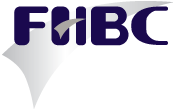 Revenue can generally be categorised into four categories:
Revenue can generally be categorised into four categories:
- sale of goods;
- the rendering of services;
- construction contracts in which the entity is the contractor; and
- the receipt of interest, royalties or dividends arising from the use of entity assets
Revenue can ultimately be dubbed the ‘heartbeat’ of the entity. That being said, the objective of general purpose financial statements of an entity is to provide information about the entity’s financial position, performance and cash flows that is useful for economic decision-making by users thereof.
Revenue is known as the gross inflow of economic benefits (in cash or otherwise) which arise in the ordinary course of business and which subsequently results in an increase in equity, other than increases relating to contributions from equity participants, such as the issue of share capital or revaluation of assets.
Revenue should be measured at the fair value of the consideration received or receivable, excluding the amount of any trade discounts, rebates, and value-added tax (if applicable). When a portion of the inflow of cash (or cash equivalents) is deferred, then the transaction inadvertently contains an arrangement which, in effect, constitutes a financing transaction. The fair value of the consideration is the present value of all future receipts determined using an imputed rate of interest (using the effective interest method).
The primary issue for accountants is determining when revenue should be recognised. The recognition is also subject to ‘terms and conditions’ discussed later in this article. Generally, two criteria must be satisfied before an item is recognised in the financial statements:
- when it is probable that future economic benefits will flow to the entity (identification); and
- the amount of revenue can be measured with reliability.
The recognition criteria are usually applied separately to each identified transaction. However, in some circumstances, it is necessary to apply the recognition criteria to the separately identifiable components of a single transaction to reflect the substance of the transaction. When the selling price of a product includes an identifiable amount in respect of goods or services to be rendered at some time in the future, that amount is deferred and recognised as revenue over the period in which the good or service is performed. Conversely, an entity applies the recognition criteria to two or more transactions together when they are linked in such a way that the commercial effect cannot be understood without reference to the series of transactions.
For example:
A car dealership sells new cars to customers. As a promotion for a limited time, the dealer offers free servicing (excluding maintenance) for a period of three years from the date of purchase. Normally, the dealership charges extra for this add-on product and therefore it is possible for a customer to purchase both the car and the product separately. During the period of the promotional offer the dealership enters a sale with two separately identified elements. In a single transaction the dealership:
- sells inventory – the new car; and
- undertakes to provide servicing for three years.
The dealership must allocate the fair value of the consideration received (the amount received from the customer) to the separately identified components of the transaction. Since the two elements are sold separately, it is possible to allocate the consideration pro-rata based on the fair value of the individual elements when they are sold separately.
Furthermore, it must apply the recognition criteria to the separately identified components of the transaction (refer paragraph 23.10–23.13 and 23.14 – 23.16, IFRS for SMEs).
From the above example it is clear that if the dealership accounted for the entire transaction in revenue, then there could be an accounting mismatch when actual costs pertaining to servicing (parts, labour etc.) are actually incurred in year two or three. In other words, revenue could be overstated in year one and expenses could be overstated in year two and three which could result in an adverse disclosure of performance and profit or loss.
Notwithstanding the criteria outlined above, the so-called ‘terms and conditions’ for the recognition of revenue from the sale of goods are when all the following conditions are satisfied:
- the entity has transferred to the buyer the significant risks and rewards of ownership of the goods;
- the entity retains neither continuing managerial involvement to the degree usually associated with ownership nor effective control over the goods sold; and
- the amount of revenue and costs incurred or to be incurred in respect of the transaction can be measured reliably.
The assessment of when an entity has transferred the significant risks and rewards of ownership to the buyer requires an examination of the circumstances of the transaction. In most cases there will be a physical transfer of goods (passing possession) or transfer of legal title to the buyer.
Conversely, an entity does not recognise revenue if it retains significant risks and rewards of ownership. For example, when the buyer has the right to rescind or cancel the purchase for a reason specified in the sales contract, or at the buyer’s sole discretion without any reason, and the entity is uncertain about the probability of return, the entity cannot recognise revenue from the sale of goods.
Revenue is one of the most important figures within the financial statements for stakeholders since it is directly related to key performance ratios, such as gross-profit, net-profit, earnings per share and return on assets not to mention the going concern principle. By understanding the importance of revenue recognition, validity, accuracy and completeness, the user will be able to leverage benefits and make more appropriate decisions.
If you have any enquiries, please contact Reghardt Barnard at reghardt@fhbc.co.za
Source Reference:
INTERNATIONAL FINANCIAL REPORTING STANDARDS FOR SMALL AND MEDIUM-SIZED ENTITIES (SMEs) IFRS Foundation: Supporting Material for the IFRS for SMEs® Standard (version 2019–01)
International Financial Reporting Standard® (IFRS®) for Small and Medium-sized Entities (SMEs) Section 23 – Revenue effective 1 January 2017.

